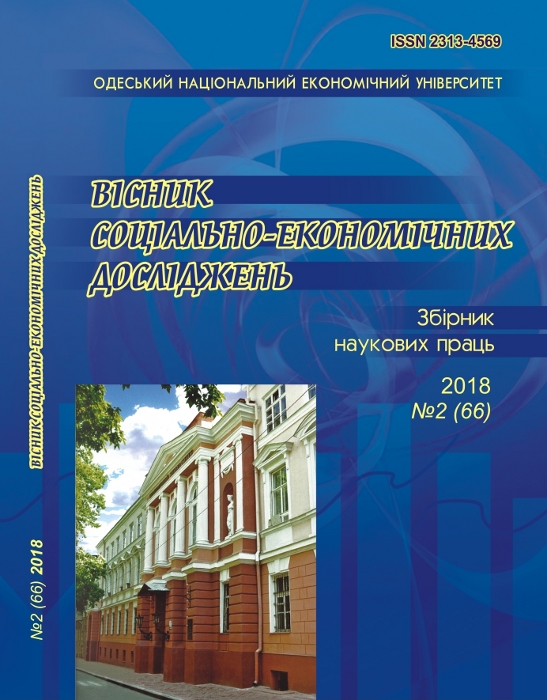Main trends in the market of international educational services and requirements for the formation of strategic priorities of Ukraine
DOI:
https://doi.org/10.33987/vsed.2(66).2018.174-184Keywords:
consumer requirements for educational services, indicators of the world market of educational services, export of educational services, geography of inbound flows, the number of foreigners studying in UkraineAbstract
The main indicators of functioning of the world market of educational services using the example of the lead countries by the number of foreign graduates of higher education institutions are considered in the article. The ratio between the number of foreign citizens graduated from higher education institutions and the supply of labour force (available working population) is calculated on the basis of the World Bank’s statistics for 2016–2017. The analysis of the dynamics and the structure of number of foreign citizens obtaining higher education in Ukraine is conducted. A special attention is focused on the recent changes in the geographical structure of the inbound flow. The countries, which were the main suppliers of foreign entrants in the past years, but for a number of reasons have lost ground to other states, are identified that requires an urgent review of the strategy of cooperation with foreign partners. The comparison of the number of foreigners enrolled at the initial cycle of studies with the total graduates’ output after completion the full cycle is provided. The characteristic requirements of potential consumers to host countries are revealed, on the basis of which the strategy of attracting foreign students to national education institutions should be built on the state and regional level. Among the main requirements are the security of foreign citizens’ stay in the country, the use of innovative technologies in the educational process and interrelation with practical activities, the availability of transport and domestic infrastructure, permanent marketing activities and full information support on the enrolment procedure and preparation for examinations. The examples of practical implementation of these strategies and alternatives to their use are given. The efficiency of stimulating the export of educational services for the country’s socio-economic development and intensification of international business cooperation is substantiated
References
Dragomirescu-Gaina, C. (2015). A fast-forward look at tertiary education attainment in Europe 2020, Journal of Policy Modeling, No. 37, pр. 804–819. DOI: 10.1016/j.jpolmod.2015.05.002.
Prodan, A. (2015). Access to higher education: influences and possible implications, Procedia – Economics and Finance, No. 20, pр. 535–543.
Blanchard, E. (2016). Trade, education, and the shrinking middle class, Journal of International Economics, No. 99, pр. 263–278. DOI: 10.1016/j.jinteco.2015.10.007.
Alam, F. (2016). Transnational education: benefits, threats and challenges, Procedia – Engineering, No. 56, pр. 870–874. DOI: 10.1016/j.proeng.2013.03.209.
Larina, L. N. (2015). Practical application of total quality management system to education of international students, Procedia – Social and Behavioral Sciences, No. 215, pр. 9–13.
Baydak, A. V. (2015). Interaction of language and culture in the process of international education, Procedia – Social and Behavioral Sciences, No. 215, pр. 14–18.
Farrugia, C. (2017). Gaining an employment edge: the impact of study abroad on 21st century skills & career prospects in the United States, Institute of International Education (IIE), New York, 22 p., available at: https://www.iie.org/Research-and-Insights/Publications/Gaining-an-Employment-Edge---The-Impact-of-Study-Abroad.
Official website of the World Bank statistical office, available at: https://data.worldbank.org.
Project Atlas: 2017 release, available at: www.iie.org/ProjectAtlas.
Official website of the State Statistics Service of Ukraine [Ofitsiinyi sait Derzhavnoi sluzhby statystyky Ukrainy], available at: http://www.ukrstat.gov.ua [in Ukrainian]
Downloads
Published
Issue
Section
License
Copyright (c) 2018 Socio-Economic Research Bulletin

This work is licensed under a Creative Commons Attribution 4.0 International License.






